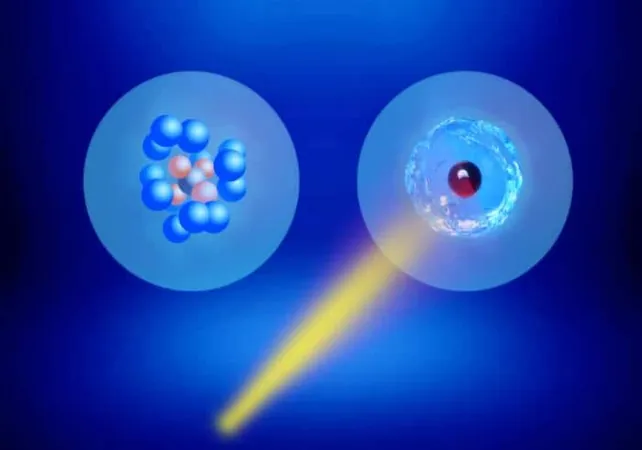
Groundbreaking Discovery: Superfluid Phase Found in Molecular Hydrogen for the First Time Ever!
2025-04-07
Author: Noah
Introduction
In an exciting development, a global team led by chemists from the University of British Columbia (UBC), Canada, has unveiled compelling experimental evidence for a superfluid phase in molecular hydrogen (H2) at an astonishing temperature of just 0.4 K.
This phenomenon, which has intrigued scientists since its theoretical prediction in 1972, had only been observed in helium and ultracold atomic gases until now. The significance of this breakthrough extends far beyond mere scientific curiosity—it could revolutionize our understanding of quantum phase transitions and collective phenomena.
The Concept of Superfluidity
Superfluidity is a remarkable quantum effect that occurs near absolute zero, leading certain fluids to transition into a state with zero viscosity. This means that they can flow without any resistance, a property that starkly contrasts with that of traditional liquids.
Until this recent discovery, superfluidity had been documented only in helium isotopes and Bose-Einstein condensates, raising the stakes for the potential of molecular hydrogen, the simplest and lightest of all molecules.
Challenges in Achieving Superfluidity in Hydrogen
While it had been long theorized that molecular hydrogen could reach a superfluid state between 1 K and 2 K, below its freezing point of 13.8 K, achieving this has proved challenging.
The research team devised a novel approach to keep hydrogen in its liquid form below this freezing mark by trapping small clusters of hydrogen molecules within helium nanodroplets at the ultra-low temperature of 0.4 K.
Experimental Methodology
They ingeniously used a methane molecule as a "disk" within these clusters, monitoring its rotation through advanced laser spectroscopy techniques.
Their setup echoed a historic experiment conducted by Georgian physicist Elephter Andronikashvili in 1946, which demonstrated resistance-free rotation in superfluid helium.
Observations and Findings
With the rotating methane molecule exhibiting increasing speed and minimal friction as the hydrogen clusters grew larger than ten molecules, the researchers observed behavior consistent with a superfluid state, where the surrounding hydrogen molecules effectively act as a single quantum entity.
Ongoing Research
This breakthrough is the culmination of nearly two decades of dedicated research aimed at answering one of physics' most enduring questions regarding the superfluidity of hydrogen.
The UBC team meticulously crafted their experiments to not only sustain hydrogen as a liquid at these extreme temperatures but also to measure the onset of superfluidity with pinpoint accuracy.
Future Implications
As they continue their research, exploring larger hydrogen clusters—ranging from 20 molecules to over one million—the team hopes to uncover how superfluidity evolves with increasing size and whether these clusters will eventually freeze or maintain their fluid state.
This exploration may illuminate the intricate boundary between quantum and classical matter.
What's more, the implications of their findings could extend into the realm of practical applications.
Hydrogen, a vital component of clean energy technology, could see revolutionary advancements in storage and transportation as our understanding of its quantum characteristics deepens.
Conclusion
In conclusion, this groundbreaking research not only expands our scientific knowledge but also holds promise for real-world applications that could transform energy technologies.
Stay tuned as researchers dive deeper into the mesmerizing world of superfluid hydrogen, exploring its potential to reshape our approach to energy efficiency!









 Brasil (PT)
Brasil (PT)
 Canada (EN)
Canada (EN)
 Chile (ES)
Chile (ES)
 Česko (CS)
Česko (CS)
 대한민국 (KO)
대한민국 (KO)
 España (ES)
España (ES)
 France (FR)
France (FR)
 Hong Kong (EN)
Hong Kong (EN)
 Italia (IT)
Italia (IT)
 日本 (JA)
日本 (JA)
 Magyarország (HU)
Magyarország (HU)
 Norge (NO)
Norge (NO)
 Polska (PL)
Polska (PL)
 Schweiz (DE)
Schweiz (DE)
 Singapore (EN)
Singapore (EN)
 Sverige (SV)
Sverige (SV)
 Suomi (FI)
Suomi (FI)
 Türkiye (TR)
Türkiye (TR)
 الإمارات العربية المتحدة (AR)
الإمارات العربية المتحدة (AR)